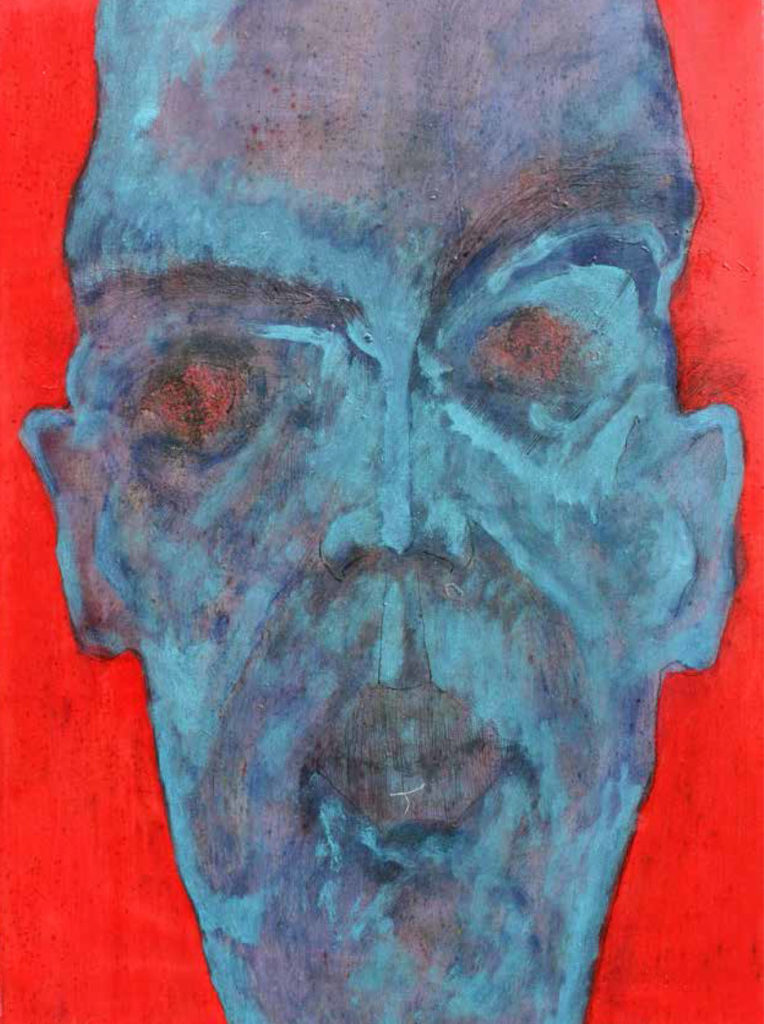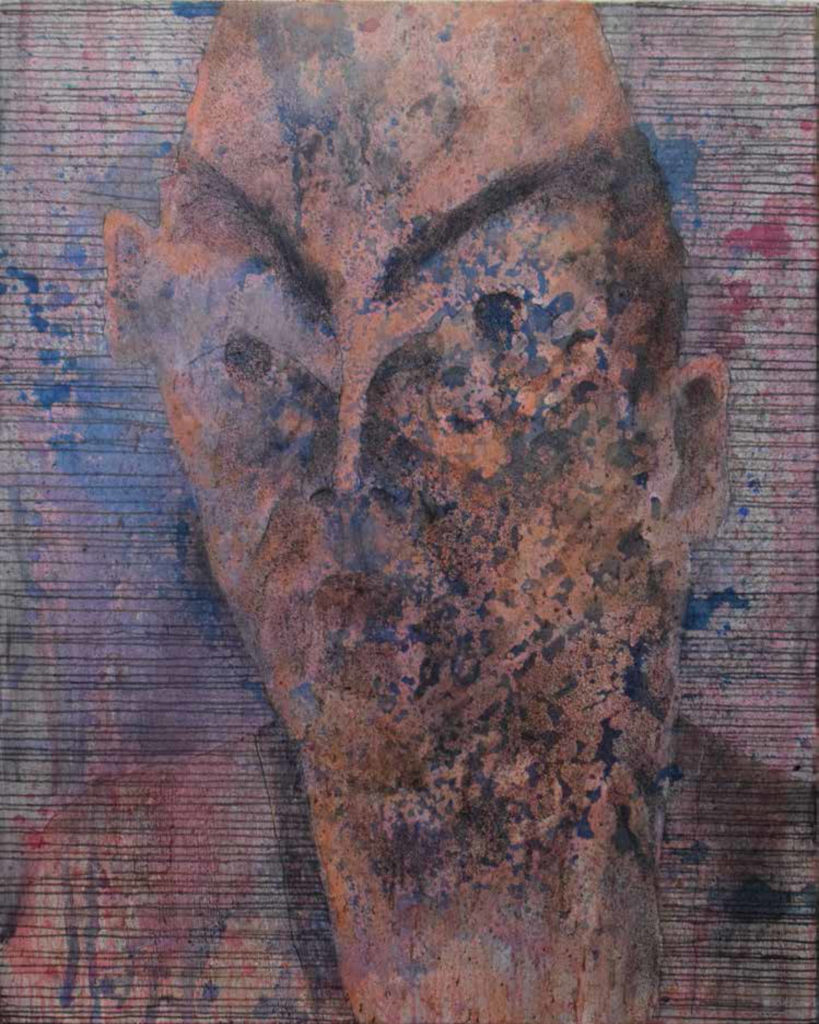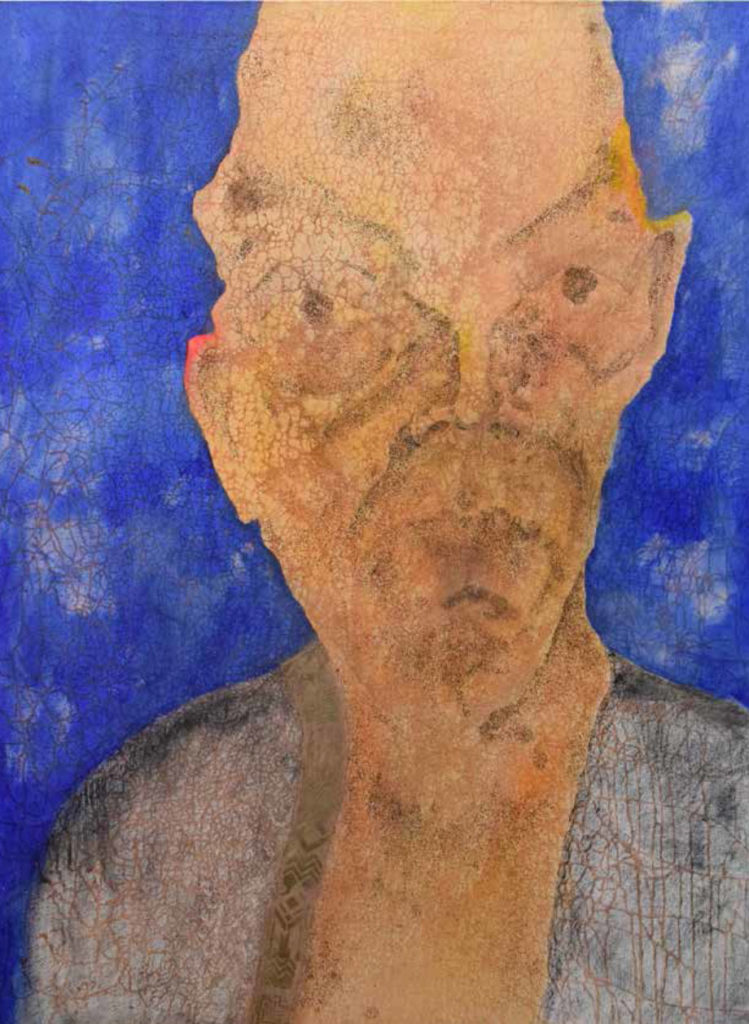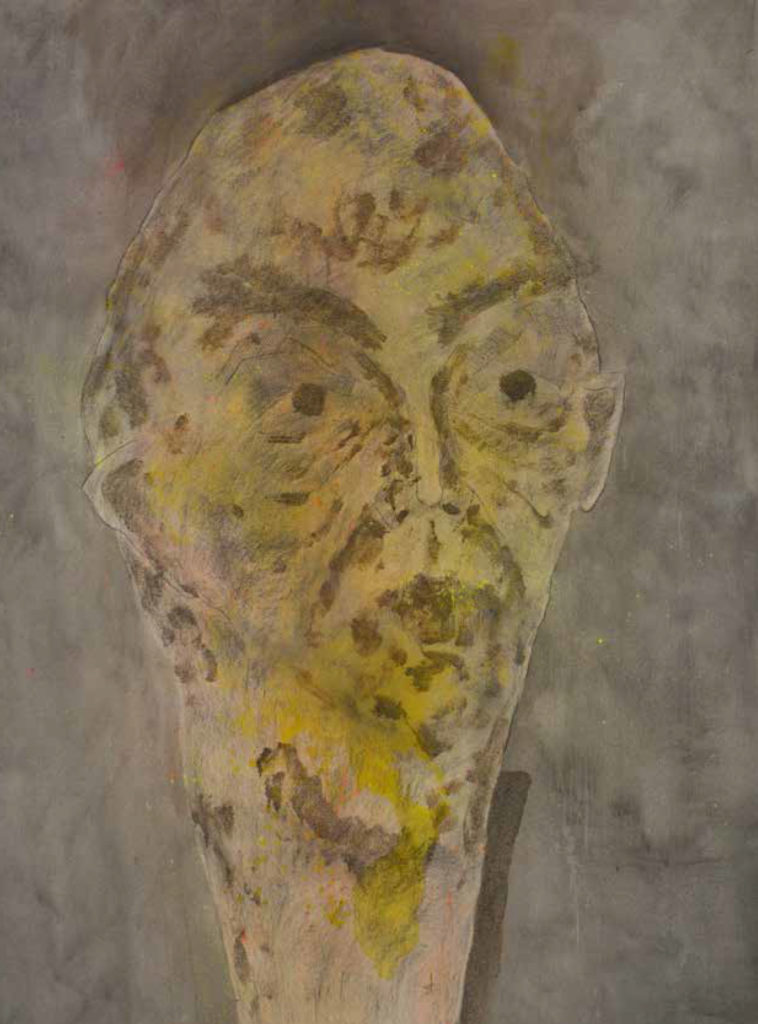“No soul without body”: Ali Omar
Ali Omar, whose work will be shown at the Seasons – Act III exhibition opening on 8 October at Bant Mag. Mekân, talks about the ideas and emotions motivating his portraits.
Interview by Ekin Sanaç
Ali Omar was born in Tabke, studied in Damascus and has been living in Istanbul since two years. Seasons – Act III exhibition opening on October 8 at Bant Mag. Mekân will show Ali Omar’s and Mert Tugen’s (BantMag illustrator) different approaches to portraits. The Syrian artist is here to tell us about his inspirations, as well his general approach to his work – a constant investigation into the communication of body and the soul.

What are your earliest memories of inspiration for your art?
This question makes me go deep in my childhood and it’s actually what I am doing everyday while I am painting and trying to pass it (my childhood) to my grandfathers.
I really like the kind of autobiographical work done by Nikos Kazantzakis’ because he started with his grandfathers and not with his childhood. This contact with your grandfathers is important for me, to understand yourself and to evolve. I believe it’s the goal of art.
When Im asking myself about the reasons I started to paint, I can find it was because I was able to hold a pen and to use it, by drawing some lines or shapes. It was giving me pleasure and it is still the same.
And even before school, my mother taught me how to hold a pen and use it, I saw some paintings and decided to choose one of them to put it in our living room. I was 4 or 5 years old. And, I always wondered about my grandfathers, who even didn’t know what a pen was – who started the invention of the pen, and started to draw in a cave. This beginning of drawing and painting raises questions desires to discover things and creates the desire for humanity to move and evolve.
How did the initial idea of your portraits series come about?
In a final project of university, before my graduation project, I was thinking about what I could propose for it. For example, before university, I spent almost for years working around the topic of death. I was copying some funerary portraits of ancient Pharaonic Egypt. Sometimes, the dead man wasn’t so rich and they put his portrait as a picture or a statue on the coffin. I was also going to the morgue to see and feel death, I was painting mass graves.
Then, I thought about why I need to paint things like that. One day, I went to my studio and I started portraits, I liked it. It was simple – a lot of artists do it, and for me, it was a technical challenge. Painting is a visual language to talk about visual solutions, so, we don’t need to tell stories. And the format of portraits is an interesting area to investigate, to explore new questions, new things, especially when confronted by the audience.
What effects has working with people as portraits had on your artistic freedom, techniques and creativity?
I’ve been doing these portraits for almost six years and it always does something. When I’m going deeper, I can find new things, new problems, to try to fix, to find solutions relative to technical and spiritual elements.
Technique and inspiration are linked, so I’m trying to understand the relation between physically things and the spirit, because without physical bodies the is no inspiration.
Art is a desire to improve life. This progress must be on a spiritual level, which requires double the amount of effort from the body, for there is no soul without the body, or at least, not an effective soul.
I always say, with my portraits, I tend to admire reality, but not to be enslaved by reality that might not have beauty in most of its details. Or at least not details concerned as the core of humanity, to create a visually beautiful dimension that belongs to modern beauty and to the human core. Humans have a lot of distortions, that contain beauty. The temptation to grasp these distortions and their beauty is irresistible.
The people in the portraits are usually with no hair. Why?
I just don’t feel the desire to paint hair. Some of them have a little hair, but I am more concerned on the portrait itself: if you cut the hair it can be fine…
Technically, I just try to find more visual solutions for lines and colors and space and it can give more space in my paintings. However, I’m trying to be careful when I’m using it and I am trying to understand and to paint the portrait from the inside not from the outside.


Are the portraits created in concentrated periods of time, or do you finalize them in extended time periods, by going back to them over and over again?
There isn’t rule about the rhythm of work. I can create in one hour one portrait, but generally I have two or three paintings I am working on at the same time. Sometimes, I come back to a painting I left few months ago, just to change some parts or totally change it. Sometimes, I have to stop for one reason or another, but generally I paint every day.
When did you have to leave Damascus? And for how long have you been in Istanbul? We believe the work we will see in the exhibition bring together works you created in Syria and Istanbul.
I chose to leave Damascus in 2012 and I’m have been in Istanbul since the beginning of November 2014. Most of the paintings were done in Istanbul and some of them, I painted in Iraq.
What does “moving” mean to you and how has it affected your artistic process?
Moving is relative to see something new and discover other things that you have. It can help you to understand different point of views about cultures and areas.
When you are in different cultures, you try to compare with cultures you were in before: what is similar or not and this give more visual education and consciousness.
What do you find especially inspiring in Istanbul?
If you are looking at the history of Istanbul, there were really hard, violent reactions, like it was the heart of the Christian world then it became the heart of the Muslim world then it became secularist against all religions. Sometimes, it takes different cultures, people, languages, religions and sometimes not. It just wants one color, I mean it’s more than just natural change. It’s really interesting to analyze it and also an inspiration for me. When there is something which is changing softly you may not see it, but when its taking a radical form of changing, you will see and feel it and then, people try to understand it.




